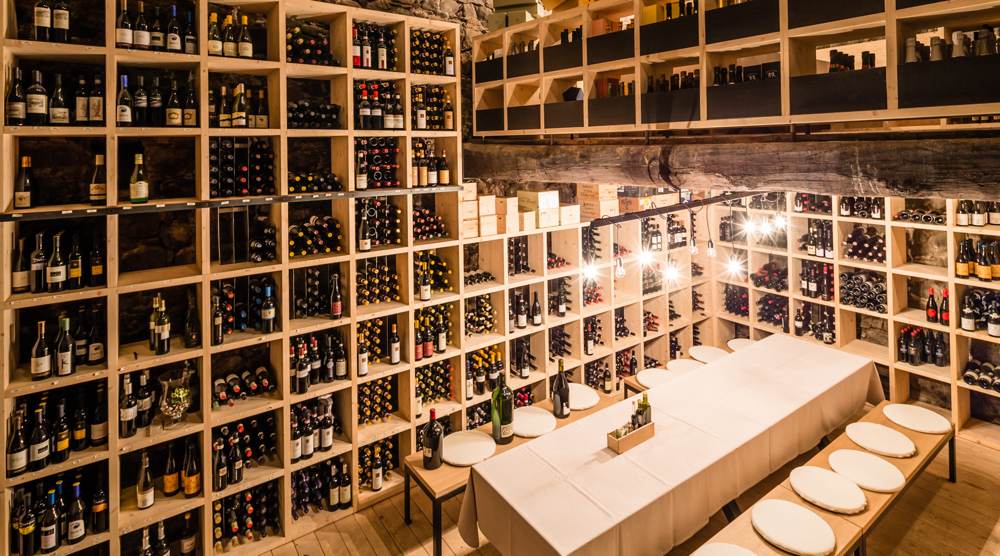
Any bar worker understands that whatever beverage you are referring to you must store it properly in order to maintain the quality, taste and freshness. This means that the product is ready to serve to the customer in the premium condition and you can be sure that there will be no complaints. During basic bar training you should be made aware of the temperatures and conditions in which alcoholic beverages should be stored, for example, lagers should be kept in a chilled environment, red wines should be served at room temperature and white wines served chilled however with regards to wine, you may not be taught how to store the bottles in your wine cellar or other designated storage area. Wine is generally considered to be more delicate than other drinks due to the complex flavours and aromas therefore must be stored correctly if you want to preserve the intended qualities. White wine should generally be consumed within a two year time period from the date of production to gain the best results. The exception to this rule is in the case of certain chardonnays that can be aged up to 20 years. Red wines will develop over time and the flavours and aromas will be enhanced as they age. There are certain elements with regards to storage conditions of wine which must be considered to ensure that you only serve wine that is in tip top condition.
Temperature and humidity
Many bars may simply store their wine selection in a wine cellar whether it is red or white and then transfer bottles to the appropriate temperature storage just before it is required. This may be the easy option and the cheapest however ideally wines should be stored at the temperature recommended for serving. This means that you may need multiple coolers and wine refrigerators to guarantee that all of your wines are kept in the ideal storage conditions. The humidity of the storage environment will also be detrimental to the quality of the wine once it is opened. Wine corks can dry out allowing air to enter the bottle and mix with the wine inside unless the storage conditions are kept relatively high in humidity, approximately 70%. Certain wine coolers will have controls to dictate not only the temperature of the storage area but also the humidity meaning that you are in control of the ideal storage conditions.
Wine types and recommended storage temperatures
Sparkling wines; Prosecco, Champagne etc.
Storage temperature; 7.2˚C/45˚F - 15.5˚C/60˚F
Dry white wines; Reisling, Pinot Gris etc.
Storage temperature; 7.7˚C/46˚F - 10˚C/50˚F
Rose and sweet wines; Rose, Moscato etc.
Storage temperature; 10˚C/50˚F - 12.2˚C/54˚F
Red wines, young with low acid; Merlot, Malbec etc.
Storage temperature; 8.8˚C/48˚F - 10˚C/50˚F
Red wines, structured; Shiraz, Cabernet Sauvignon etc.
Storage temperature; 15˚C/59˚F - 17.2˚C/63˚F
Red wines, aged or dry; Pinot Noir
Storage temperature; 15.5˚C/60˚F - 17.7˚C/64˚F
Red wines, fine aged; Pinot Noir
Storage temperature; 17.7˚C/64˚F
Gradient
All wines should be stored on their sides rather than in an upright position. This horizontal position ensures that the corks do not dry out therefore allowing air into the bottle to oxidise the wine. Oxidisation will spoil the wine if left for a long period of time. Although wines should be stored on their side it is often recommended to allow the bottle to rest for a short period in an upright position just before serving. This allows any sediment present in the bottle to settle to the bottom and not be transferred to the glass.
Brightness
All wines should be kept out of sunlight whilst in storage as the UV rays can spoil the wine. Some bottles are made from darkened glass in an attempt to keep out the light however this does not prevent all light from seeping through. It is recommended to keep wines in total darkness however when this is not a viable option you can store the wine sealed in a box or crate or tightly wrapped in a cloth.
By understanding the basic elements of wine storage and the effect that certain aspects have the end product, you can ensure that you are able to keep your wine stock in an ideal storage environment that will retain the high standard and quality of the wine which you will serve to your customers.

Leave a Comment
Your email address will not be published. Required fields are marked *